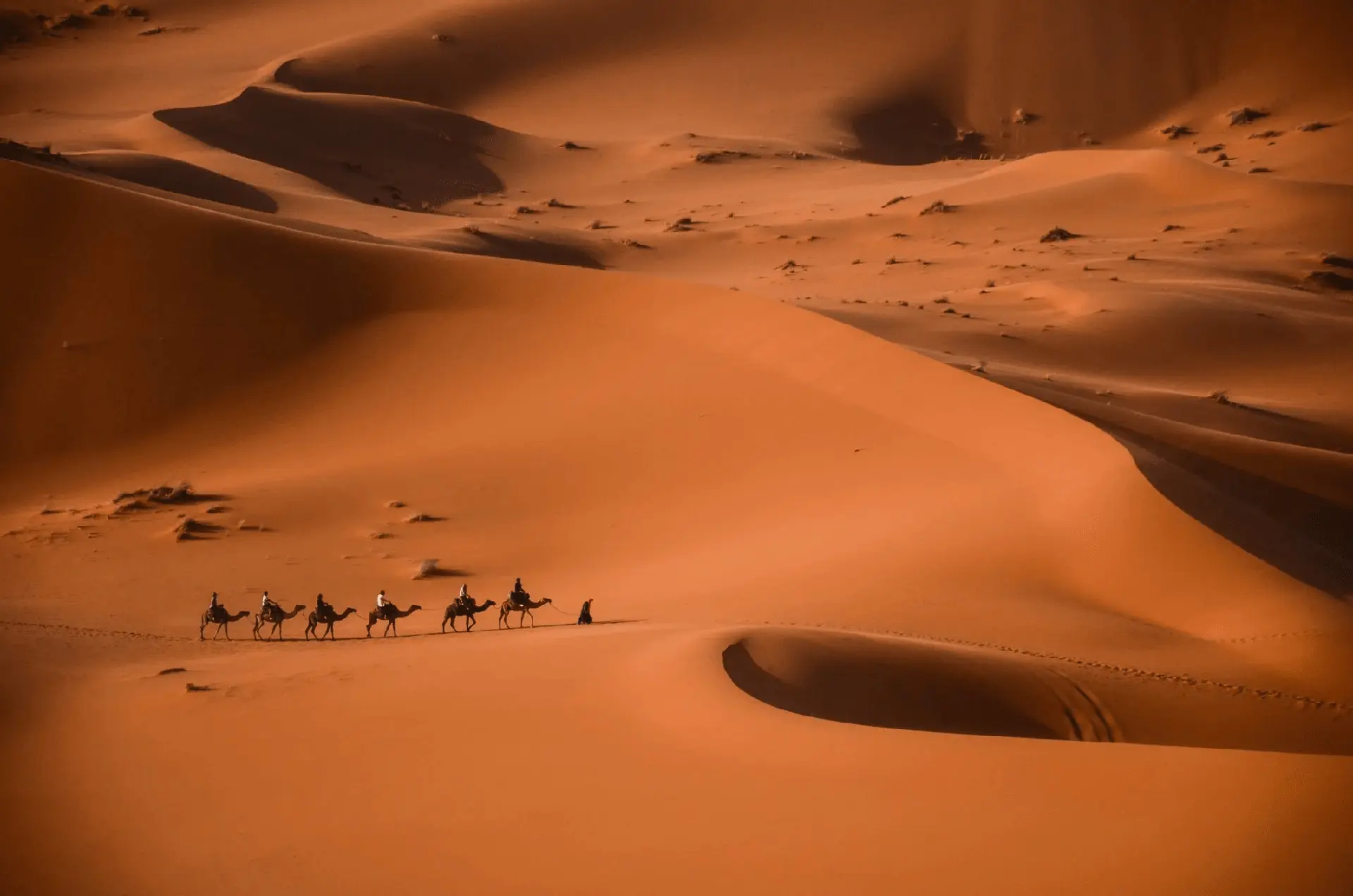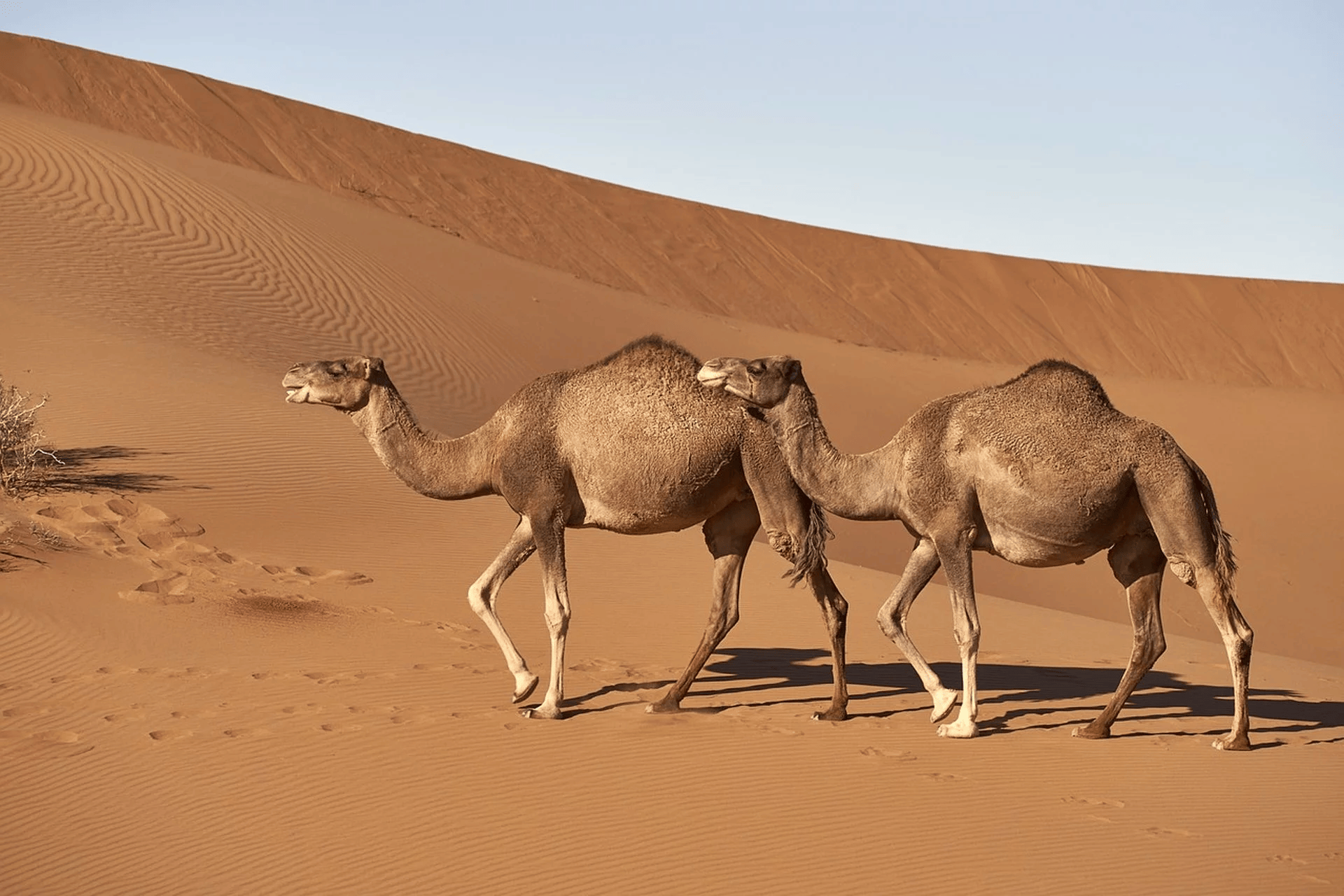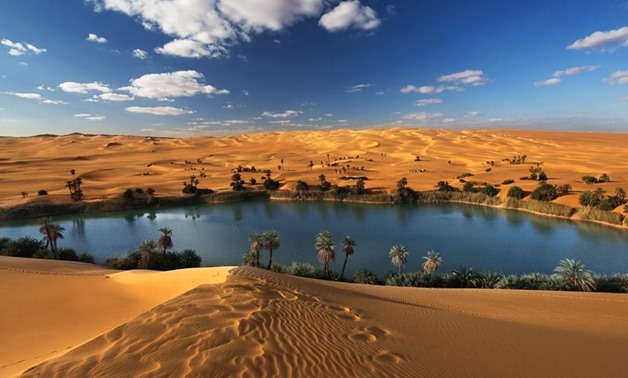The Sahara Desert, the world’s largest hot desert, stretches across the northern portion of Africa and is known for its vast, arid landscapes, extreme temperatures, and unique ecosystems. This iconic desert covers approximately 9.2 million square kilometers (3.6 million square miles), making it comparable in size to the United States or China. It is home to a fascinating range of landscapes, wildlife, and cultures, embodying both harshness and resilience.
Geography and Location of the Sahara Desert
The Sahara Desert spans 11 countries: Algeria, Chad, Egypt, Libya, Mali, Mauritania, Morocco, Niger, Western Sahara, Sudan, and Tunisia. It stretches over 5,000 kilometers from the Atlantic Ocean in the west to the Red Sea in the east and approximately 1,930 kilometers from north to south, transitioning from coastal and mountain regions to central plateaus and sand seas.
The landscape is diverse, with ergs (sand dunes), regs (stony plains), hamadas (rocky plateaus), and wadis (dry riverbeds). The famous sand dunes, which can reach up to 180 meters (590 feet) in height, only cover about 20% of the desert. The rest of the Sahara is a combination of bare rock formations, gravel plains, and sparse vegetation.
Climate and Weather Patterns
The Sahara is classified as a hyper-arid desert, experiencing high temperatures and minimal rainfall throughout the year. Average temperatures hover around 30–40°C (86–104°F) in the summer, with daytime temperatures occasionally reaching as high as 58°C (136°F). Winters in the Sahara can be surprisingly cold, with nighttime temperatures sometimes dropping below freezing.

Rainfall in the Sahara is extremely scarce, averaging less than 100 millimeters (4 inches) per year in most areas. The desert’s low humidity also contributes to intense evaporation rates. The Sahara's climate is influenced by the Hadley Cell, a large-scale atmospheric circulation pattern that results in stable high-pressure systems and clear skies, maintaining its hot, dry environment.
Flora and Fauna Adaptations
Despite its inhospitable environment, the Sahara Desert is home to a surprising variety of plants and animals, many of which have adapted to survive the extreme conditions.
Flora
Vegetation is sparse, with plants adapted to conserve water, such as the acacia tree, date palm, and desert grasses. Certain regions, particularly near oases, support more vegetation, providing habitats for unique plant life. In these areas, plant roots grow deep to reach underground water sources, allowing them to survive long droughts.
Fauna
The Sahara hosts several species uniquely adapted to its extreme conditions, including:
- Dromedary Camels: Known as the “ships of the desert,” camels have specialized humps that store fat and water, enabling them to survive for long periods without fresh water.

- Fennec Fox: This small, nocturnal fox has large ears that help regulate body temperature and keen senses for locating prey.
- Saharan Silver Ants: Active only at midday when temperatures are at their peak, these ants minimize predation by operating at times when few other creatures are active.
- Addax Antelope and Desert Lizards: Both species are resilient, with adaptations such as light-colored coats that reflect sunlight and burrowing behaviors to escape the day’s heat.
Human History and Culture in the Sahara
The Sahara has been inhabited by humans for thousands of years, with early evidence of prehistoric settlements, rock art, and artifacts indicating a once-lush environment. Ancient rock art, dating back over 10,000 years, depicts rivers, lakes, and animals like elephants and giraffes, highlighting the desert's greener past during the African Humid Period.
Nomadic Tribes and Settlements
Today, nomadic tribes, including the Tuareg, Berbers, and Bedouins, continue to inhabit the Sahara, living in harmony with its challenging environment. These tribes follow traditional ways of life, relying on camel herding, trading, and craftsmanship. In more settled areas, ancient trade routes such as the Trans-Saharan trade routes were once thriving networks for exchanging gold, salt, and other goods between African empires and the Mediterranean.

Environmental Concerns and Preservation
The Sahara is facing environmental challenges, primarily due to desertification and climate change. Expanding desert boundaries affect neighboring regions, threatening ecosystems and agriculture in nearby Sahel countries. Human activities like overgrazing, deforestation, and unsustainable water extraction contribute to these changes.
In response, various organizations and governments have initiated projects aimed at combatting desertification, such as the Great Green Wall Initiative, which aims to restore vegetation across the Sahel to create a buffer against the advancing desert.
Famous Landmarks of the Sahara Desert
The Sahara Desert is home to unique landscapes and archaeological treasures:
- The Ahaggar Mountains in Algeria: Known for their rugged peaks and ancient rock art, these mountains are a haven for adventure seekers.

- Libyan Desert Glass: This natural glass found in the Libyan Desert was formed by a meteorite impact over 26 million years ago and has been used in ancient Egyptian artifacts.
- Chott el Djerid in Tunisia: A large salt lake with shimmering, surreal landscapes.

- The Oasis of Siwa in Egypt: Known for its lush date palms and ancient ruins, Siwa Oasis provides a striking contrast to the surrounding desert.

Sahara Desert in Popular Culture
The Sahara has inspired numerous books, films, and explorations, symbolizing both adventure and isolation. Films like "Lawrence of Arabia" and "The English Patient" depict the desert’s beauty and danger, while explorers from Ibn Battuta to Michael Asher have documented its landscapes, people, and mysteries.
The Sahara remains a source of fascination for scientists, who study its role in climate patterns, and for adventurers, who find inspiration in its vast, unforgiving landscapes.
Conclusion
The Sahara Desert, with its stark landscapes, unique biodiversity, and rich human history, is more than just an expanse of sand. It is a land of contrasts and resilience, home to species and cultures that have adapted to its challenges over centuries. Efforts to preserve and understand the Sahara continue, as scientists, conservationists, and locals work to balance human needs with the delicate ecosystem of this vast, iconic desert.
Sahara Desert: Exploring The World's Largest Hot Desert